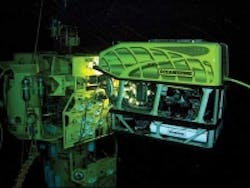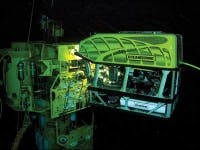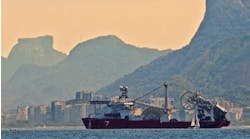Gene Kliewer • Houston
Seismic survey activity
Some 5,300 km (3,293 mi) of marine 2D seismic, gravity, and magnetic data have been acquired and processed by TGS-NOPEC offshore Republic of Somaliland and is available to coincide with the ongoing licensing round.
The surveys targeted the principle structural elements and allow targeting of leads, plays, and structural highs for further investigation. The area is analogous to Yemen, where several oil fields have been found, according to TGS-NOPEC.
This first-ever offer of petroleum exploration licenses off Somaliland includes eight blocks totaling more than 89,624 sq km (34,604 sq mi) of both offshore and onshore areas. The surveying was done in partnership with the Somaliland Ministry of Water and Mineral Resources.
SeaBird Exploration Ltd. has a letter of intent for an approximately $3-million 2D survey off Mozambique of around 3,000 line km (1,864 mi). SeaBird says the survey will be acquired with theMunin Explorer and was scheduled to begin in April.
Northern Petroleum (UK) Ltd. has ongoing 2D seismic operations in six thrust belt licenses off Pantelleria Island, Sicily. The project expects to acquire more than 2,500 km (1,553 mi) of data in a work program funded by Shell Italia as part of a farm-in agreement. The licenses are G.R17.NP, G.R18.NP, G.R29.NP, G.R20.NP, G.R21.NP, and G.R22.NP plus C.R147.NP.
Bergen Oilfield Services holds the acquisition contract and is using theBOS Angler.
Honduras has granted Petroleum Geo-Services an exclusive 10-year contract to acquire multi-client data offshore. No seismic data had been acquired off the country since 1993 until theFalcon Explorer began work earlier this year on the Phase 1 MC2D program. Some 2,500 km (1,553 mi) of data will be collected. Phase 1 uses an 8-km (5-mi) GeoStreamer, which will provide the longest offset data ever for the area. This first phase will help design more focused programs in the future, PGS says.
New technology reaches the field
A new velocity model building and pre-stack depth migration processing program from dGB Earth Sciences and Geokinetics runs in OpendTect and has three plugins.
The proprietary dGTB VMB plugin is for picking RMO velocities and pre-stack events. The PSDM-Tomography and PSDM-Kirchhoff plugins contain relevant tools from Geokinetics to give a complete PSDM processing system, according to the companies.
“Costs and quality of PSDM processing are largely dependent on the time-consuming, manual process of building and updating velocity models,” says Paul de Groot, president and CEO of dGB. “Reducing cycle times means you can run more iterations in less time and thus produce higher quality PSDM outputs at lower cost. This is what we aimed for when we started to develop this system three years ago. The first release of VMB includes vertical update – and horizon-consistent update modules. Velocity gridding, horizon picking, 3D body generation, and QC are performed in OpendTect Base; the Open Source part of the system.”
“Velocity model building is closely related to interpretation,” says Lee Bell, chief geophysicist at Geokinetics. “Modern interpretation tools for identifying and constructing horizons, bodies, and faults greatly facilitate the process of transforming seismic data into a geologically feasible depth image.”
Roxar ASA has released Tempest 6.5, its latest version of an advanced reservoir simulation software suite. Tempest 6.5 comes with extended parallel processing capabilities and speed improvements in both serial and parallel simulation runs, allowing users to conduct faster simulation runs in greater levels of detail, according to Roxar.
Tempest 6.5’s improved visualization capabilities include the ability to calculate streamlines for each phase from the simulator results and to develop 3D cross sections, enhanced line graphs and data displays.
Key features include:
- Speed improvements in both serial and parallel simulations. The version supports full parallel simulation on multi-core workstations and clusters. It also has a new algebraic multi-grid linear solver
- Easy-to-use interface with a property calculator, 3D cross-sections and well-well cross sections, enhanced line graphs, data displays, summary vectors display, and well filters
- Network model based on group control to model flow from wells. These include influence function tables for aquifiers, end-point scaling, temperature variation of viscosity, and the O method to model flow in distorted grids.
Knowledge Reservoir has released its 2009 Deepwater Gulf of Mexico Reservoir KB. This latest release has upgrades to the Web-based services and a new GIS interface. It covers all deepwater productive sands discovered constituting producing reservoirs or those scheduled for development.
The collection now has 193 fields, 620 associated reservoirs, more than 1,050 wells including appraisal and development wells, and a review of the Paleogene challenge.





